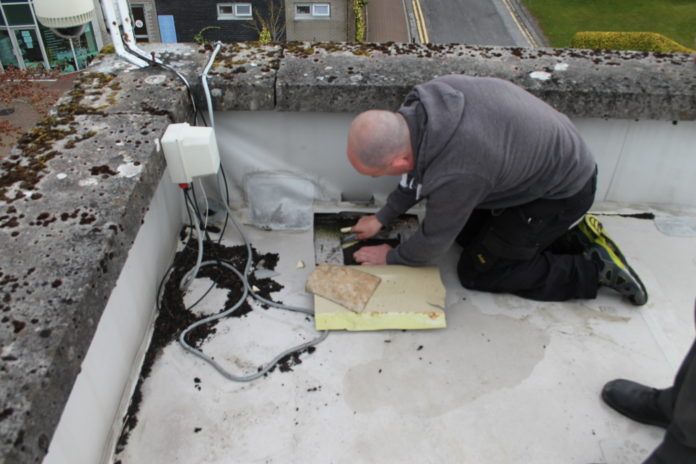This month’s Technical Note from Keith Roberts is the first in a new series that highlights the importance of roof inspections.
Roof inspections are widely carried out by many different parties but not always with success, leaving owners and general contractors concerned about missing information and sometimes leading to poor decisions on future works. This is a topic about which little has been written and will be developed in this series of RCI Technical Notes.
- Condition survey
The starting point for a refurbishment project of an existing roof is the condition survey. The objective is to determine the current roof build-up and the condition of the elements.
The surveyor should look for evidence of moisture that may have caused the supporting materials to corrode or decay. The adequacy of the rainwater goods system is checked. Where there is entrapped water, parts of the roof deck and structure may require replacement to prevent local collapse or potentially detachment in strong winds. The thickness and type of thermal insulation and the presence, or otherwise, of a vapour control layer should be determined.
Acquiring all of this information is likely to need local opening up and core sampling of the existing roof. The surveyor should be familiar with the basics of roof design to know what questions will need answering in the future and what to look for in the examination.
The information obtained from the condition survey forms the basis for the design and specification of the new roof. It is important that the information is correct, otherwise there is the risk that as the project develops, there would be unforeseen additional works, increasing costs for the building owner.
A dilapidation survey at the end of a lease for a commercial building is a type of condition survey where the findings are used to assess the value of works necessary to bring the roof up to an agreed standard condition.
- Quality compliance
The objective is to check that roofing works in progress are in accordance with the specification and drawings. It is important that the surveyor has a copy of the contract documents in advance, to have read them and to understand what is proposed.
The timing of these inspections is critical and should be agreed in advance, whilst recognising that dates for visits may change at a short notice due to variations in weather conditions and rates of progress. It’s important to observe and record the materials actually being used and how they are installed as the works are progressively closed up and hidden from view. These quality compliance inspections may form part of obtaining Building Regulation approval.
The surveyor needs to have a working understanding of the roof system, the limitations of the materials and application methods together with a working knowledge of the Building Regulations.
- Investigation
When specific performance issues arise such as roofing elements becoming detached in strong winds or recurring water ingress into the building, then an investigation is likely to be called for. Often there is some urgency to attend the site and ultimately answer the questions raised. Immediately after wind damage it is important to gather the evidence promptly to help determine the initial point of failure and before roof openings are covered up.
As well as core sampling some forms of site testing may be appropriate such as pull-out testing of fasteners. Equally electrical earth leakage testing to locate punctures in roof membranes and capacitance meter tests to measure the extent of entrapped water, can be appropriate for moisture investigations.
The surveyor needs to adopt a methodical approach, observing and recording the facts. This can lead to identifying potential causes and later narrowing them down to those most likely. Sharing background experience from previous investigations can sometimes be helpful.
- Other inspections
Other reasons for roof inspections include annual maintenance surveys for building owners, often to comply with product guarantee requirements. These annual audits can be helpful in scheduling routine maintenance works, such as cleaning out and repairing rainwater goods systems and checking the security of exposed elements in the advance of winter storms.
Occasionally audits are required of a roofing contractor’s performance to become approved by a manufacturer, to gain membership of a trade association or as part of a national scheme such as Competent Roofer. These audits often follow defined procedures and can offer constructive feedback.
Conclusion
A surveyor undertaking a roof inspection needs to know in advance what the objectives of the inspection are, and to have the appropriate experience. The future success of a roofing project, be it a refurbishment, ongoing work in progress or an investigation, is ultimately reliant upon the surveyor adopting a methodical approach, recording the findings and reaching a fair and balanced conclusion.
The next Technical Note will discuss carrying out roof inspections safely.




